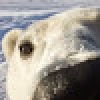programming
the process of giving a mechanism the directions to accomplish a task
instructions
the directions
computer program
a set of instructions that tells a computer how to accomplish a task
programmers
write the programs
programming languages
languages used to communicate with a computer; Visual Basic is a programming language
Integrated Development Environment (IDE)
an environment that contains all of the tools and features you need to create, run, and test your program; also called an IDE
Integrated Development Environment (IDE)
an environment that contains all of the tools and features you need to create, run, and test your program; also called an IDE
Graphical User Interface (GUI)
what the user sees and interacts with while your program is running; also called GUI
application
a GUI along with its program instructions
coding
the process of translating a solution into a language that the computer can understand
Object-Oriented Programming Language (OOP)
a programming language that allows the programmer to use objects to accomplish a program's goal; also called OOP
Object
anything that can be seen, touched, or used
class
a pattern that the computer uses to create (instantiate) an object
instance
an object created (instantiated) from a class
instantiated
the process of creating an object from a class
designer window
used to create an application's GUI
form
the foundation for the user interface in a Windows Form application
toolbox window
contains the tools used when creating an interface
controls
objects (such as a picture box or a button) added to a form
properties
the attributes that determine an object's appearance and behavior
properties window
lists an object's attributes (properties)
solution explorer
displays a list of the projects contained in the current solution and the items contained in each project
code
program instructions
code editor window
where you enter code for your application
camel case
used when entering object names; the objects ID; examples- btn, pic, ...; first three letters lowercase, next letter is a capital
name property
assigns a name to an object; name is used to refer to object in code
syntax
the rules of a programming language
sub procedure
a block of code the performs a specific task
method
a predefined procedure that you can call (invoke) when needed
comment
a line of text that serves to internally document a program; begins with an apostrophe





